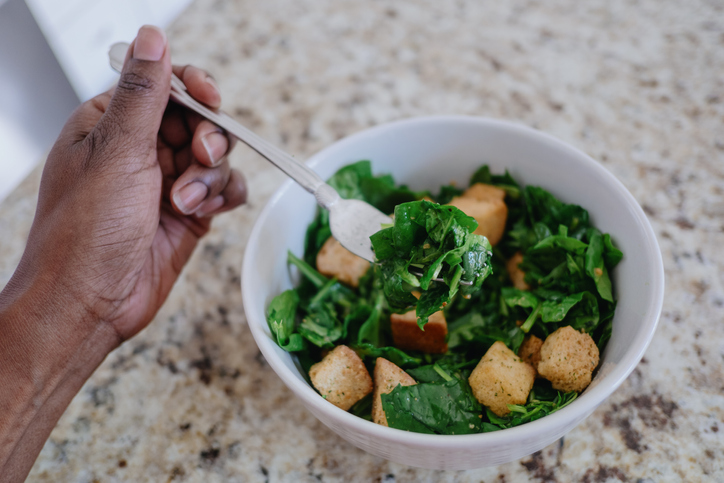
Source: Milko / Getty
For decades, people have tried to hack nutrition to figure out that “perfect” diet for their bodies. Countless fad diets have had their moment in the spotlight. One such diet was (and still is) the blood type diet. After naturopathic physician Dr. Peter D’Adamo released his book Eat Right 4 Your Type in 1996, thousands of testimonies came out from followers of the blood type diet, stating that it had changed their lives.
Everyone— and every body— is different, so there’s something clearly appealing about a diet that tailors to your specific, nuanced genetic makeup. And if you’ve struggled with your weight or health issues and found no results from other diets, finding a deeper cause for those challenges can be almost psychologically relieving. Maybe it’s not you – maybe it’s your blood type. But, is there any validity to this diet? It remains popular to this day. Any time you’re considering upending the way you eat, it’s important to know the real science (if any) behind a fad diet. Here’s a look at the way the blood type diet works and its reported benefits.
What Is The Idea Behind The Blood Type Diet?

Source: Grace Cary / Getty
In his book, Dr. D’Adamo’s discusses the idea that your blood type reveals genetic traits of your ancestors, and those are indicators of the kinds of foods their bodies responded to best. Essentially, it states that every blood type, over time, has developed antibodies that respond differently (positively, negatively or neutrally) to certain foods. In some individuals, their antibodies attack certain foods, seeing them as “foreign,” while responding well to others. As a response to an antibody attack, a person might experience issues like bloating, weight gain, diarrhea, stomach pains and a slew of other issues.
As far as diet goes, the antibodies of interest are called lectins. They’re released through food and bind sugar molecules together. Different dietary lectins impact each blood type in specific ways. According to the blood type diet, introducing the wrong dietary lectins for your blood type can cause your blood cells to clump together and increase risk of health concerns.
One can see how Dr. D’Adamo was turned onto this concept, because there has been evidence that different blood types are prone to different health issues. For example, research published in The BJM shows that people with type O blood are at a higher risk for stomach ulcers.









